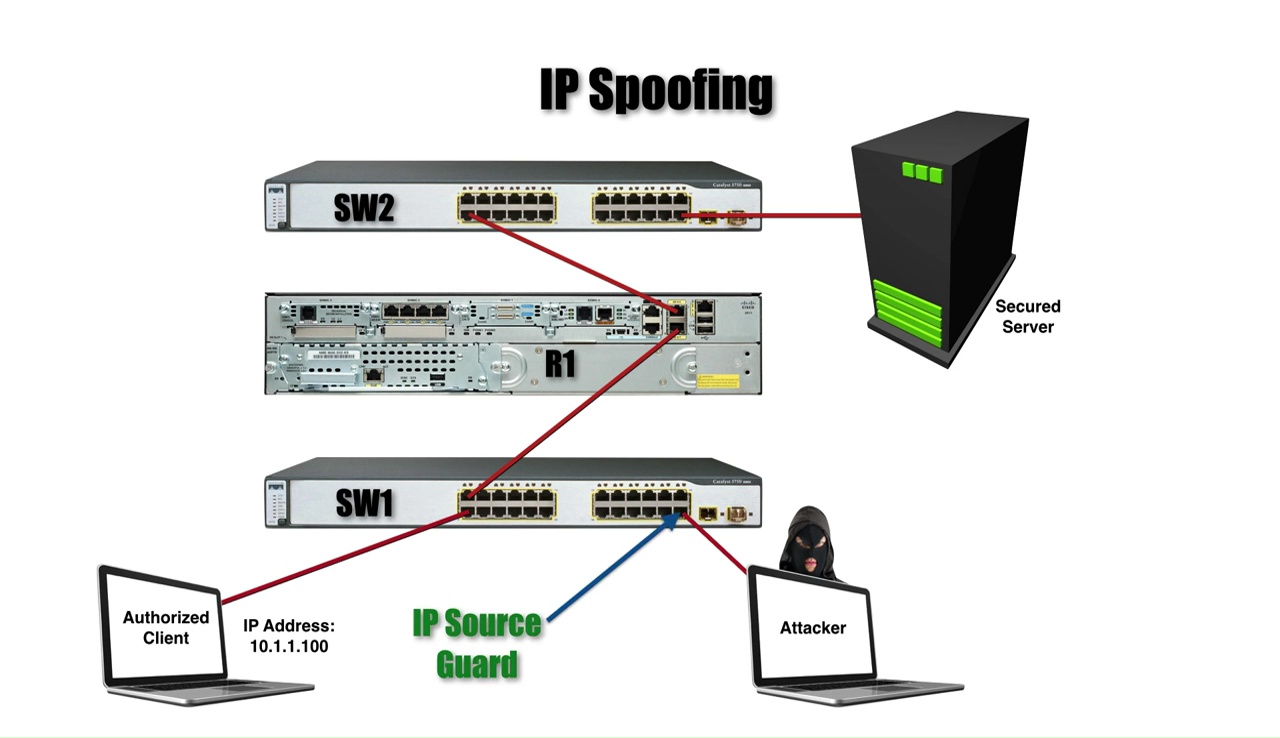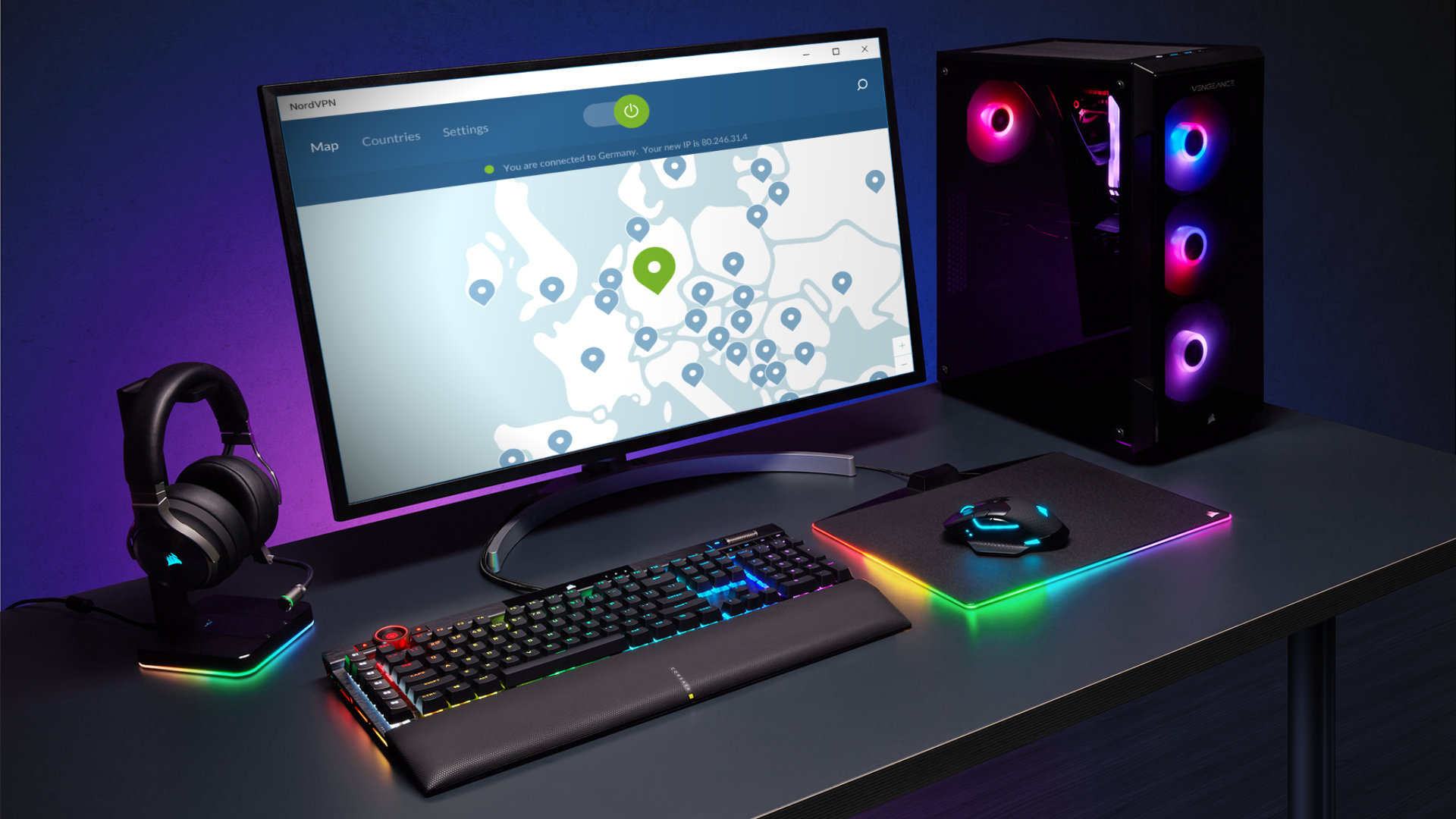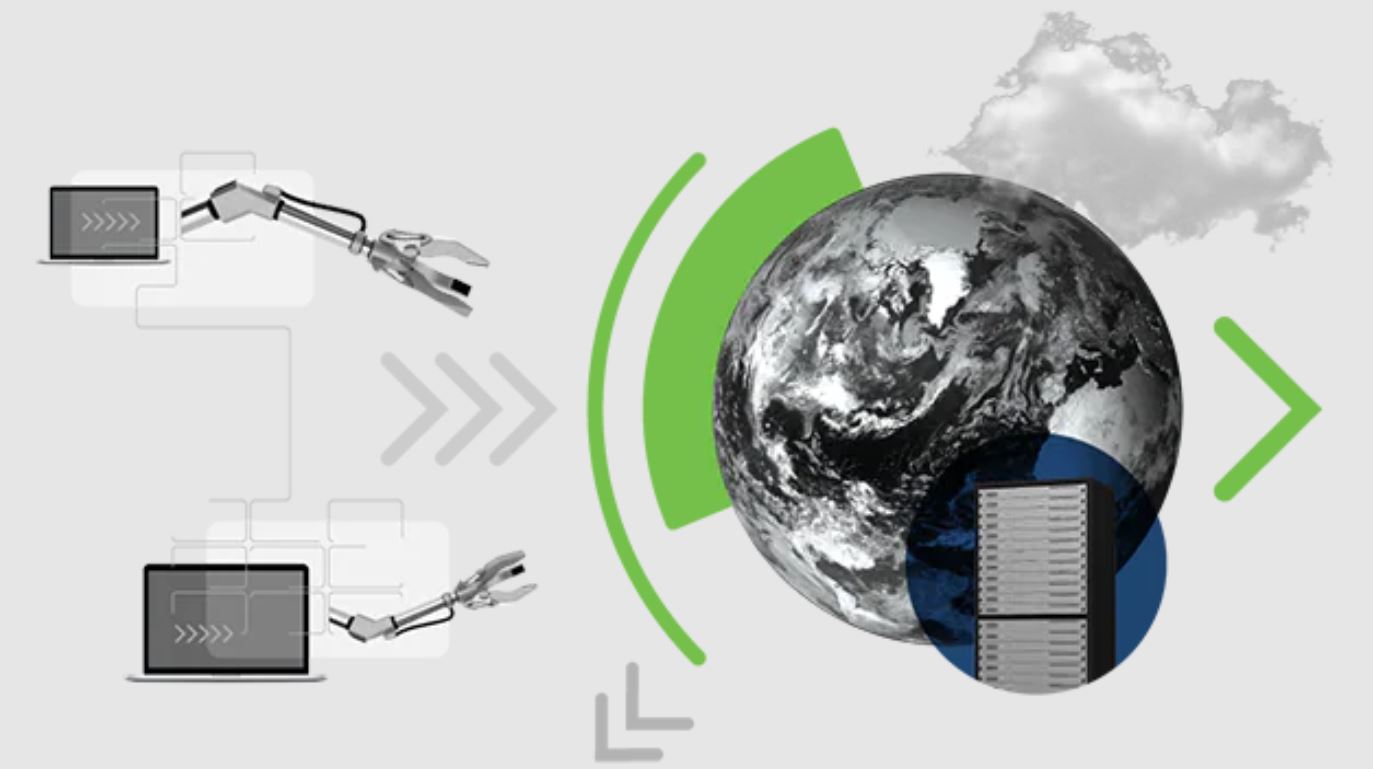Introduction
A Distributed Denial of Service (DDoS) attack can wreak havoc on an individual or organization’s online presence. By flooding a targeted network or website with an overwhelming amount of traffic, these malicious attacks can disrupt its regular functioning, rendering it unavailable to legitimate users.
In recent years, the prevalence of DDoS attacks has increased, with cybercriminals leveraging them as a means of extortion or simply causing chaos. While it is important to note that engaging in any form of illegal activity, including launching a DDoS attack, is strictly prohibited and punishable by law, it is still vital for individuals and organizations to understand the mechanisms behind these attacks to protect themselves against them.
This article aims to provide a comprehensive guide on how a DDoS attack can be executed using someone’s IP address. However, it is essential to note that the information presented here is purely for educational purposes. Engaging in any malicious activity is both unethical and illegal.
In the following sections, we will explore the concept of DDoS attacks, delve into the technical understanding of IP addresses, discuss the gathering of IP address information, and explore the process of launching a DDoS attack using a botnet. Additionally, measures to hide one’s identity and the potential legal consequences of engaging in such activity will also be discussed.
By gaining insight into the workings of DDoS attacks, individuals and organizations can better comprehend the risks involved and take appropriate measures to bolster their cybersecurity defenses.
What is a DDoS Attack?
A Distributed Denial of Service (DDoS) attack is a malicious attempt to disrupt the regular functioning of a network, website, or online service by overwhelming it with a massive influx of traffic. In essence, it involves an attacker utilizing multiple compromised computers or devices to flood the target with an immense volume of requests, rendering it inaccessible to legitimate users.
The primary objective of a DDoS attack is not to breach or compromise the target’s security but to exhaust its resources and bandwidth, causing severe disruption. The attackers achieve this by harnessing the power of botnets, a network of compromised computers or Internet of Things (IoT) devices.
Botnets are created by infecting vulnerable computers with malicious software, such as Trojans or worms. Once compromised, these devices become part of the botnet, controlled by the attacker. The attacker can then command the botnet to send an overwhelming amount of traffic to the target, saturating its network and servers.
DDoS attacks can be classified into several types, including:
- Volume-based attacks: These attacks aim to inundate the target with a massive volume of traffic, consuming its network resources. They often use techniques like UDP floods or ICMP floods.
- Protocol attacks: These attacks exploit vulnerabilities in network protocols to overwhelm the target’s servers. Techniques such as SYN floods or Ping of Death fall into this category.
- Application layer attacks: These attacks target the application layer of the target’s infrastructure, trying to exhaust its resources or exploit vulnerabilities. Examples include HTTP floods or Slowloris attacks.
The impact of a successful DDoS attack can be severe, leading to financial losses, reputational damage, and a loss of customer trust. It is crucial for individuals and organizations to be aware of the different types of DDoS attacks and take proactive measures to protect themselves.
In the following sections, we will explore how an attacker can use someone’s IP address to launch a DDoS attack, dissecting the technical aspects associated with such activity.
Understanding IP Addresses
An IP address, short for Internet Protocol address, is a unique numerical identifier assigned to every device connected to a network or the internet. It serves as a way for devices to communicate with each other and navigate through the vast online landscape.
An IP address is composed of a series of numbers, separated by periods, such as “192.168.1.1”. Each set of numbers represents a specific part of the address, indicating the network and the device within that network.
There are two main types of IP addresses: IPv4 and IPv6. IPv4, the most widely used, consists of four sets of numbers, while IPv6 is longer and can accommodate a much larger number of devices due to the increasing demand for internet-connected devices.
When it comes to launching a DDoS attack, the IP address plays a crucial role. Attackers need to identify the IP address associated with their target to focus their assault on the correct network or website.
IP addresses can reveal certain information about the user or the location of the device. However, it is important to note that IP addresses alone do not provide personal identification details or physical addresses. They primarily serve as an online identifier for routing internet traffic.
It is worth mentioning that IP addresses can be dynamic or static. Dynamic IP addresses are temporary and can change over time, while static IP addresses remain the same for a longer duration. When launching a DDoS attack, it is easier for attackers to target a static IP address as it remains constant and predictable.
IP address information is publicly available, and various online tools and services are designed to retrieve and analyze this information. However, it is essential to respect privacy and ethical boundaries when using such tools and services.
In the next section, we will explore how attackers can gather IP address information to launch a DDoS attack.
Gathering IP Address Information
Gathering IP address information plays a crucial role in launching a DDoS attack. Attackers need to identify the target’s IP address before executing their assault. There are several methods through which an attacker can gather this information:
- Website logs: Website owners often keep logs of user IP addresses for various purposes, such as analytics or security. Attackers can potentially access these logs if they manage to breach the website’s security or compromise the server hosting the website.
- Social engineering: Attackers may resort to social engineering techniques to trick individuals into revealing their IP addresses. Common tactics include phishing emails, impersonating tech support personnel, or spoofing legitimate websites to deceive users into providing their IP address information.
- Network scanning: Attackers can perform network scans using tools like Nmap or Zmap to identify active devices on a network. By scanning different IP ranges, they can potentially discover the IP addresses associated with the target.
- DNS reconnaissance: By querying DNS servers, attackers can gather information about the target’s domain, subdomains, and associated IP addresses. This information can help them pinpoint the specific IP address they need to focus their DDoS attack on.
- Monitoring network traffic: Attackers can intercept and monitor network traffic to identify the target’s IP address. Man-in-the-Middle (MitM) attacks or network sniffing tools can assist them in capturing the IP addresses of devices communicating on a network.
It is important to note that engaging in any of these methods without proper authorization is illegal and unethical. Gathering IP address information should only be done within the boundaries of applicable laws and regulations.
To protect against the gathering of IP address information, individuals and organizations are advised to implement strong security measures. This can include regular vulnerability assessments, strong password policies, up-to-date software patches, and user education on social engineering tactics.
In the next section, we will explore how attackers utilize botnets to launch a DDoS attack.
Using a Botnet to Launch a DDoS Attack
One of the key elements in launching a DDoS attack is a botnet. A botnet refers to a network of compromised computers or IoT devices that an attacker controls remotely. By harnessing the power of a botnet, attackers can amplify the impact of their DDoS attacks. Here’s how a botnet is utilized in launching a DDoS attack:
- Building a botnet: Attackers infect vulnerable devices with malware, such as Trojans or worms, to create a botnet. These compromised devices become “bots” or “zombies” that are under the attacker’s control. The attackers often exploit security vulnerabilities or use social engineering techniques to trick users into installing the malware.
- Command and control (C&C): The attacker establishes a command and control infrastructure to manage the botnet. This infrastructure enables the attacker to issue commands to the compromised devices, instructing them to participate in the DDoS attack. The C&C infrastructure ensures coordinated and simultaneous attack execution.
- Launching the attack: Once the botnet is established and the command to launch the DDoS attack is given, the compromised devices start flooding the target with traffic. Since the attack traffic is distributed across multiple devices, it becomes difficult for the target to distinguish between legitimate and malicious requests.
- Types of botnets: There are different types of botnets available for attackers to utilize. Some use traditional computers infected with malware, while others take advantage of the growing number of IoT devices. IoT botnets, such as Mirai, have been responsible for some of the most devastating DDoS attacks in recent years.
It is crucial to understand that building, controlling, or participating in a botnet is illegal and can lead to severe consequences. Engaging in such activities can result in criminal charges and significant penalties.
Protecting against botnet-driven DDoS attacks involves implementing robust security measures. This includes regularly updating software and firmware, utilizing strong passwords, installing reputable security software, and being cautious of suspicious links or attachments in emails.
In the next section, we will discuss the selection of the right DDoS tool for launching an attack.
Selecting the Right DDoS Tool
When launching a DDoS attack, attackers rely on specialized tools designed to generate and distribute massive amounts of traffic to overwhelm the target. These tools are carefully selected based on their capabilities and ease of use. Here are some factors to consider when selecting the right DDoS tool:
- Attack type: Different tools specialize in different types of DDoS attacks. Some tools focus on volume-based attacks and can generate a high volume of traffic, while others excel in protocol or application layer attacks. It is important to choose a tool that aligns with the intended attack strategy.
- Attack strength: The tool’s ability to generate a significant amount of traffic is crucial in overwhelming the target. Attack strength can vary among different tools, so attackers often opt for tools that have a reputation for delivering powerful DDoS attacks.
- Ease of use: The usability and accessibility of the tool are important considerations. Tools with intuitive interfaces and clear instructions make it easier for attackers to launch and control the DDoS attack effectively.
- Anonymity features: Some DDoS tools offer features that allow attackers to conceal their identities, such as hiding or spoofing their IP addresses. These features make it more difficult for authorities to trace the source of the attack back to the attacker.
- Flexibility and customization: Advanced DDoS tools provide options for customization, allowing attackers to fine-tune their attacks based on their specific targets. Customization options may include controlling the attack duration, frequency, or targeting specific endpoints.
It is crucial to note that the use of DDoS tools for malicious purposes is illegal and unethical. Possessing, distributing, or utilizing DDoS tools with the intent to harm others is a criminal activity that can lead to severe legal consequences.
On the defensive side, organizations can protect against DDoS attacks by implementing robust network security measures. This includes deploying firewalls, intrusion detection and prevention systems, and traffic monitoring tools capable of detecting and mitigating DDoS attacks.
In the following section, we will explore the configuration process of a DDoS tool for launching an attack.
Configuring the DDoS Tool
Once a suitable DDoS tool has been selected, attackers must configure it properly to launch an effective DDoS attack. Configuring the tool involves setting parameters and options that determine the characteristics and behavior of the attack. Here are the key steps involved in configuring a DDoS tool:
- Target specification: Attackers need to specify the target IP address or domain they intend to attack. They may also input additional parameters such as port numbers or specific URLs to direct the attack towards specific endpoints or vulnerable areas.
- Attack type selection: Depending on the capabilities of the chosen DDoS tool, attackers will need to specify the type of attack they want to launch. This could include volume-based attacks, protocol attacks, or application layer attacks, as mentioned in a previous section.
- Attack strength adjustment: Some DDoS tools allow attackers to adjust the intensity or strength of the attack. Attackers can set parameters such as the number of packets or requests per second, the duration of the attack, or the total bandwidth consumed. These values are typically based on the desired impact and the capabilities of the attacking infrastructure.
- Spoofing or hiding identity: Advanced DDoS tools provide options for attackers to anonymize themselves or spoof their IP addresses. This feature helps attackers avoid detection and makes it challenging for authorities to trace the attack back to its source. However, it also increases the illegality and severity of the attack.
- Attack start: Once the tool has been configured, attackers initiate the DDoS attack by pressing the appropriate command or button within the tool’s interface. The tool then starts generating and directing traffic towards the target, overwhelming its resources and causing disruption.
It is essential to reiterate that engaging in any form of DDoS attacks is illegal and punishable by law. Configuring a DDoS tool with the intention to harm others is considered a criminal offense. Organizations and individuals should focus on implementing strong cybersecurity measures to protect against such attacks and report any suspicious activities to the appropriate authorities.
In the next section, we will explore the process of launching the DDoS attack and the steps taken to hide one’s identity.
Launching the DDoS Attack
After configuring the DDoS tool, attackers are ready to launch the actual DDoS attack. The process involves initiating the tool’s attack mechanism and directing a massive volume of traffic towards the target. Here are the key steps involved in launching a DDoS attack:
- Validate the configuration: Before launching the attack, attackers may want to double-check the configured parameters, target specifications, and attack settings to ensure everything is set up correctly.
- Establish connectivity: Attackers ensure that their attacking infrastructure, including the botnet or the compromised devices, is connected and ready to execute the attack. This usually involves confirming that the botnet is online and responsive.
- Trigger the attack: Attackers initiate the attack via the DDoS tool’s interface or by sending a command to the command and control (C&C) infrastructure. The tool then begins to flood the target with a high volume of traffic, overwhelming its resources and causing disruption.
- Monitor the attack: During the attack, attackers monitor the progress to evaluate its effectiveness. They may analyze network statistics, traffic logs, or performance metrics to assess the impact on the target and the success of the attack.
- Adjustments and refinements: Depending on the desired outcome and the response from the target, attackers may make adjustments to the attack parameters. This could involve tweaking the attack strength, changing attack patterns, or modifying targeting settings to maximize the impact on the target.
It is important to reiterate that launching a DDoS attack is a criminal act and is strictly prohibited. Engaging in such activities can lead to severe legal consequences, including criminal charges and imprisonment. It is essential for individuals and organizations to focus on protecting themselves against DDoS attacks and report any suspicious activities to the appropriate authorities.
In the following section, we will discuss the measures taken to hide one’s identity when launching a DDoS attack.
Hiding Your Identity
When launching a DDoS attack, attackers often take measures to hide their identities and mask their activities to avoid detection and legal repercussions. Here are some common techniques used to hide one’s identity:
- IP address anonymization: Attackers can make use of tools or services that hide or spoof their IP addresses. This makes it difficult for authorities to trace the attack back to the original source. Proxy servers, Virtual Private Networks (VPNs), or anonymous networks like Tor are commonly employed for this purpose.
- Botnet infrastructure: Attackers establish layers of intermediaries, such as compromised devices or servers, to obfuscate their true identities. By using multiple layers, attackers can make it more challenging for authorities to pinpoint the origin of the attack.
- Compromised systems: Attackers may compromise additional devices or networks to launch the attack, further distancing themselves from the illicit activity. By using a chain of compromised systems, it becomes harder to trace the attack back to its source.
- Encryption: Attackers can encrypt their communications and traffic to add an extra layer of anonymity. By encrypting the traffic, it becomes challenging for network administrators or law enforcement agencies to analyze the contents and identify the attacker.
- False or stolen identities: Some attackers may employ stolen or false identities to carry out their activities. This can involve using stolen credentials or creating fake accounts to mask their true identities during the planning and execution of the DDoS attack.
It is crucial to understand that these techniques are illegal, and engaging in such activities can lead to severe legal consequences. Hiding one’s identity during a DDoS attack does not absolve an individual from the responsibility and potential criminal charges associated with the act.
Organizations and individuals should focus on implementing strong security measures to protect against DDoS attacks rather than engaging in illegal activities. This includes deploying robust network security solutions, monitoring network traffic for suspicious activities, and establishing incident response plans.
In the next section, we will discuss the potential legal consequences of engaging in DDoS attacks.
Legal Consequences of DDoS Attacks
Engaging in a Distributed Denial of Service (DDoS) attack is both illegal and unethical. Launching a DDoS attack, regardless of the motive or target, can lead to severe legal consequences. Here are some of the potential legal consequences that individuals involved in DDoS attacks may face:
- Criminal charges: DDoS attacks are considered computer crimes in many jurisdictions. Individuals involved in launching such attacks can face criminal charges, including computer fraud, unauthorized access to computer systems, theft of intellectual property, or even cyberterrorism offenses.
- Imprisonment: If convicted for engaging in a DDoS attack, individuals may face imprisonment. The length of imprisonment can vary depending on the severity of the attack, the level of harm caused, and the country’s laws where the attack took place.
- Fines and financial penalties: Individuals found guilty of launching DDoS attacks may be subject to hefty fines and financial penalties. These penalties can include compensation for damages incurred by the target, the cost of investigating the attack, and the disruption caused to the targeted service or network.
- Loss of reputation and career: Engaging in illegal activities, such as participating in DDoS attacks, can result in severe damage to one’s personal and professional reputation. It can lead to difficulties in finding employment, tarnish professional relationships, and negatively impact future career prospects.
- Extradition: If an individual carries out a DDoS attack across international borders, extradition to the country where the attack occurred may be pursued. This can result in the individual facing legal proceedings and potential imprisonment in the target country.
It is crucial to understand that the potential legal consequences of engaging in DDoS attacks are significant. The impact of these consequences not only affects the individuals directly involved but also extends to their families, communities, and future prospects.
Organizations and individuals should focus on maintaining strong cybersecurity practices, implementing robust network security measures, and promoting ethical behavior in the digital domain. By doing so, they can protect themselves and contribute to creating a safer and more secure online environment.
In the final section, we will provide a summary and key takeaways from the discussion thus far.
Conclusion
Understanding DDoS attacks and the methodologies behind them is crucial for individuals and organizations to protect themselves from such threats. However, it is important to emphasize that engaging in any form of illegal activity, including participating in DDoS attacks, is strictly prohibited and carries severe legal consequences.
In this article, we explored the concept of DDoS attacks and how attackers can utilize someone’s IP address to launch such attacks. We discussed the importance of understanding IP addresses, the methods used to gather IP address information, the utilization of botnets in DDoS attacks, and the selection and configuration of DDoS tools. Additionally, we highlighted the measures taken to hide one’s identity during an attack and discussed the potential legal repercussions of engaging in DDoS attacks.
Protecting against DDoS attacks should be a priority for individuals and organizations. Implementing robust network security measures, employing traffic monitoring tools, and educating users about cybersecurity best practices are essential steps to guard against DDoS attacks.
It is paramount to remember that ethical behavior and compliance with the law are of utmost importance in the digital realm. Instead of engaging in illegal activities, individuals should focus on promoting a safe and secure online environment, reporting suspicious activities, and encouraging responsible use of technology.
By fostering ethical behavior and leveraging strong cybersecurity measures, we contribute to a safer internet landscape for everyone.

























